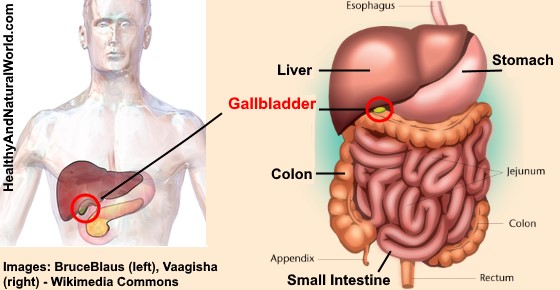

When you burn fat quickly, extra cholesterol accumulates in the bile, which can lead to gallstones. Gallbladder problems may also result from rapid weight loss after delivery. Changes in your hormone levels after delivery may also be the culprit. This may be because pregnancy hormones aggravated the problem during the preceding nine months, and it takes a while for things to go back to normal. It's not uncommon for gallbladder disease symptoms to appear two to four months after delivery. This means less pain and an easier recovery. The gallbladder can then be removed without having to create a large incision. The laparoscope has a tiny camera that transmits a picture of the organs to a video monitor. The surgeon makes two small abdominal incisions, inserting surgical instruments and a laparoscope. If you need your gallbladder removed (a surgery called cholecystectomy) it will probably be done laparoscopically. If the inflammation is severe, or if there's an infection, an operation may be necessary to remove your gallbladder and prevent more serious complications. Your doctor may prescribe medication and suggest that you make lifestyle changes like eating fewer fatty foods and getting regular exercise.

How is gallbladder disease treated during pregnancy? Gallbladder disease during pregnancy has been associated with an increased risk of preterm birth, readmission of the mother to the hospital, and even mother and/or infant fatality in the newborn period. However, if you have symptoms that hinder your ability to nourish yourself and pass along adequate nutrition to your developing baby, or if a severe obstruction leads to inflammation or infection, your baby could be affected. And the vast majority of people with gallstones have no symptoms.

At the same time, another pregnancy hormone, progesterone, causes muscular tissue throughout the body to relax and the release of bile to slow. Estrogen, a pregnancy hormone, increases cholesterol secretion. Gallstones are more common in pregnancy because of hormonal changes. If the bile contains too much cholesterol and not enough bile salts, or the gallbladder doesn't empty properly, the gallbladder can form gallstones. As food enters the small intestine from the stomach, the gallbladder receives a signal to start contracting and release bile into the intestine.īile is composed of water, bile salts, and cholesterol, among other things. Its purpose is to store bile, a substance that helps digest fats. The gallbladder is a small, sac-shaped organ that sits just beneath the liver.


 0 kommentar(er)
0 kommentar(er)
